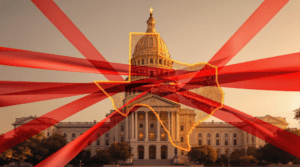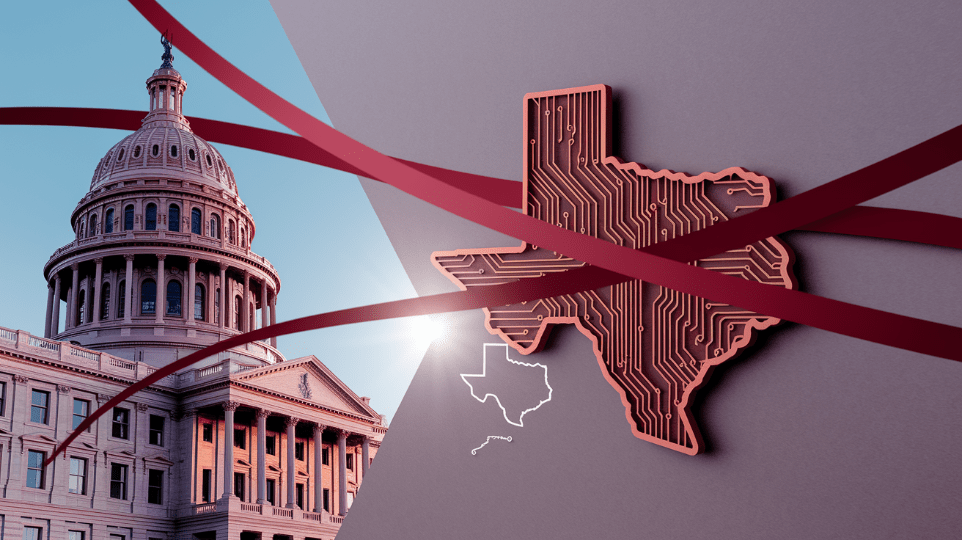Trump AI Vision Stalled by Texas GOP Regulations
The Political Clash Over AI Innovation
Have you ever wondered how political decisions can slow down cutting-edge technology? The Trump AI vision, which aimed to position Texas as a national powerhouse for artificial intelligence, is facing significant roadblocks from Texas GOP regulations. These rules, designed to prioritize data security and ethical oversight, are creating delays that could undermine broader goals for U.S. tech leadership. It’s a classic case of good intentions clashing with innovation, leaving many in the industry frustrated.
Former President Donald Trump’s push for AI as a driver of economic growth and national security envisioned Texas leading the charge with advanced projects in surveillance, agriculture, and energy. However, new state-level mandates for AI oversight have introduced red tape that experts say is stalling progress. As we’ll explore, this isn’t just a local issue—it’s a national debate on how to balance regulation with rapid development.
Key Provisions in Texas AI Legislation
At the heart of the conflict are specific rules that add layers of scrutiny to AI projects. For starters, all AI training datasets must go through mandatory ethics review boards, which can take weeks or months. Then, there’s the requirement for state approval on any public-sector AI deployments, effectively putting a governor’s stamp on innovations that could otherwise move faster.
- Mandatory ethics review boards for AI training datasets, ensuring compliance with privacy standards but slowing down experimental work.
- State approval required for public-sector AI deployments, which has halted several pilot programs tied to Trump’s AI vision.
- Restrictions on cloud computing access for machine learning projects, limiting collaboration with out-of-state partners and raising costs for startups.
These provisions might sound protective, but they’re raising eyebrows among tech enthusiasts. Imagine trying to launch a new app—only to wait for government sign-off. It’s a real-world example of how overregulation can stifle creativity.
Impact on Trump’s AI Vision for Emerging Technologies
The Trump AI vision for transforming key sectors is taking a hit in three major areas, thanks to these Texas regulations. Let’s break it down to see why this matters for the bigger picture.
1. National Security Applications
One of the most pressing issues is the delay in border surveillance systems. These computer vision algorithms, central to Trump’s AI initiatives, now face 90-day approval cycles before testing can begin at the US-Mexico border.
This bottleneck not only slows down national security efforts but also raises questions: How can we stay competitive globally if red tape keeps us from deploying AI quickly?
2. Agricultural Automation
Agriculture is another area where Trump’s AI vision promised big wins, like using smart tech to boost efficiency. But with these regulations, projects are facing delays that hit farmers hard. For instance, a smart irrigation system meant to save water and cut costs is now postponed by six months, adding millions in expenses.
| Project | Delay | Cost Impact |
|---|---|---|
| Smart Irrigation | 6 months | $2.7M |
| Livestock Monitoring | 4 months | $1.4M |
Think about a family-run farm in Texas—relying on these tools to compete in a tough market. Delays like this could mean lost crops or higher prices for consumers, making you wonder if the regulations are worth the trade-off.
3. Energy Grid Optimization
Finally, machine learning models for power distribution networks, a key part of Trump’s AI vision, now require third-party audits. This adds 8-12 weeks to timelines, potentially delaying upgrades that could make our energy systems more resilient. It’s a reminder that while safety is important, overregulation might leave us lagging behind countries with fewer restrictions.
Strategic Responses From Tech Allies
Supporters of Trump’s AI vision aren’t sitting idle—they’re fighting back with smart strategies. Organizations linked to the former president are challenging these rules through federal courts, lobbying state officials, and even shifting resources to more AI-friendly states like Florida.
- Legal challenges through federal courts to overturn what they see as overly restrictive policies.
- Lobbying efforts targeting state committee members, aiming for amendments that could ease the burden on innovation.
- Parallel development in AI-friendly states, where regulations are less stringent, to keep momentum going.
This approach shows resilience, doesn’t it? It’s like pivoting in a game—adapting to the rules while pushing for change.
National Implications for Trump’s AI Vision
This situation highlights broader tensions in conservative tech policy, where state priorities often clash with federal ambitions. While Trump’s AI vision emphasizes national competitiveness, Texas is doubling down on data sovereignty to protect traditional industries.
State vs Federal Priorities
According to a report from the White House, federal guidelines promote AI as a tool for economic growth, but Texas regulations add extra hurdles. A study from the Brookings Institution found that this disconnect could widen the gap in U.S. AI leadership.
Investor Reactions
Investors are pulling back, with venture capital for Texas AI startups dropping 22% in Q2 2025, per PitchBook data. This reaction underscores how regulations can scare off funding, potentially derailing Trump’s AI initiatives nationwide.

Pathways to Resolution
Looking ahead, experts suggest ways to resolve this standoff. Options include regulatory compromises, federal overrides, or creating special zones for tech development. Each path could help revive Trump’s AI vision while addressing legitimate concerns.
- Regulatory compromise through amended oversight rules to speed up approvals without sacrificing ethics.
- Federal preemption of state AI policies, giving national strategies the upper hand.
- Formation of special economic zones for tech, where innovation can thrive with fewer restrictions.
Future of AI in Conservative Politics
As AI becomes more politicized, the Texas case offers lessons on balancing progress with values. What if we could harness Trump’s AI vision to create jobs in red states while respecting local traditions? Analysts predict scenarios like regulatory rollbacks by 2026, each with varying impacts.
Expert Predictions for 2026
| Scenario | Probability | Impact |
|---|---|---|
| Regulatory Rollback | 45% | High |
| Status Quo | 30% | Medium |
| Accelerated Conflict | 25% | Critical |
Frequently Asked Questions
How do Texas regulations differ from federal AI guidelines?
The state mandates additional compliance for data sourcing and model interpretability, going beyond NIST’s AI framework. This extra layer is slowing down elements of Trump’s AI vision.
What industries face immediate impacts?
- Defense contractors, where rapid deployment is key.
- Precision agriculture, affecting everyday farming operations.
- Energy infrastructure, delaying critical upgrades.
Are other red states following Texas’ lead?
Five states have proposed similar legislation, but none match Texas’ strict requirements, potentially isolating Trump’s AI vision in the region.
References
- PitchBook. (2025). “Q2 2025 Venture Capital Trends.” pitchbook.com
- Brookings Institution. (2024). “The Impact of State AI Regulations.” brookings.edu/ai-policy
- White House. (2023). “AI Bill of Rights.” whitehouse.gov/ai-bill-of-rights
In conclusion, the challenges to Trump’s AI vision in Texas remind us that innovation often requires collaboration between policymakers and tech leaders. What are your thoughts on this?
